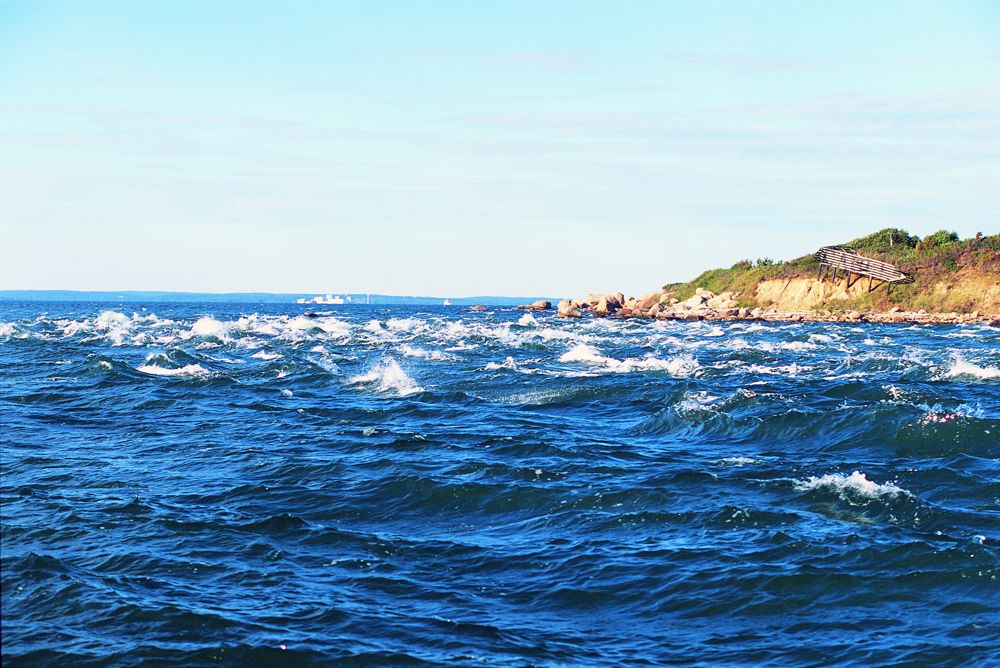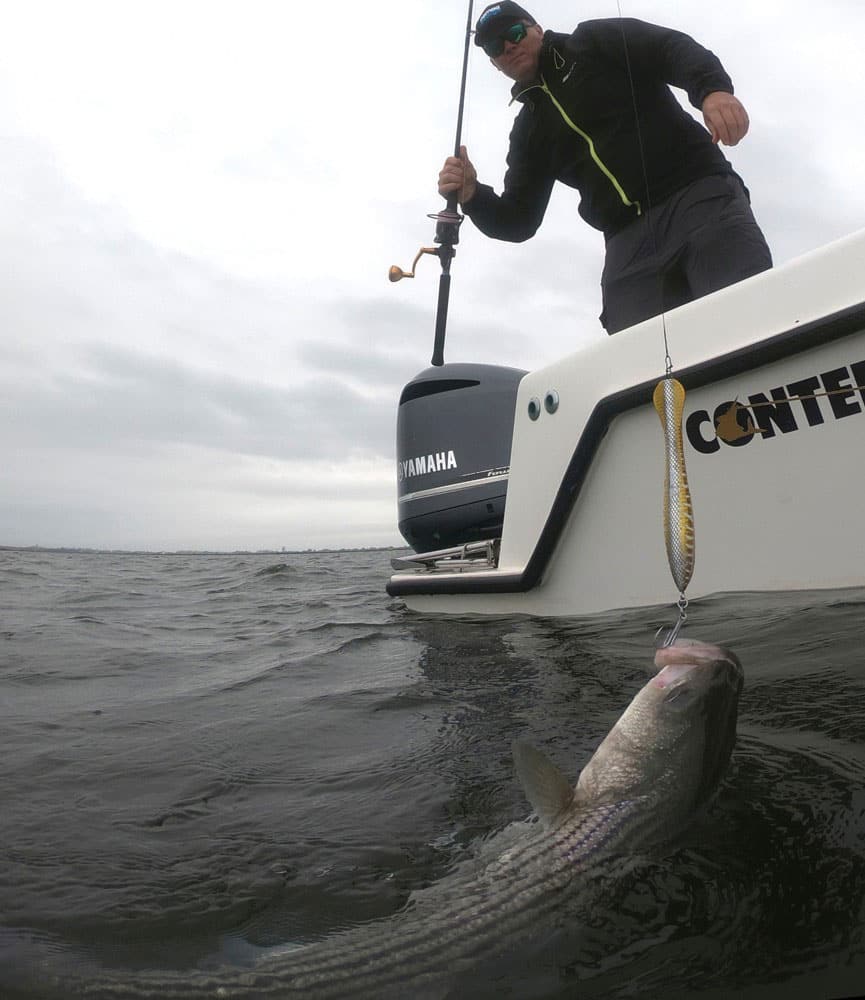
Striped Bass fishing is incredibly popular, but if you want to learn how to catch striped bass, there are certain techniques you need to master. Some of the most popular methods are fly fishing, trolling, fishing from shore, and night fishing for striped bass. Which of these forms of striper fishing will be most effective depends upon a number of variables, ranging from the striped bass season in your neck of the woods, to whether you prefer to catch higher numbers of school-sized stripers, or fish instead for fewer larger fish.
Before we dig into specific techniques, let’s consider some general striper fishing tips that every angler needs to know:
- Stripers living in brackish or saltwater can be very sensitive to the tides and currents. How they react to these factors changes from place to place and season to season, but it’s important to always be aware of these variables.
- Striped bass are structure-oriented fish, and will usually be found close to structure. When they are found in open water, they’re usually focusing on large shoals of bait.
- The bulk of the striper population on the Atlantic seaboard migrates. This means the best striped bass season changes from north to south. In early spring the Chesapeake Bay (where the majority of the stripers spawn) is a focal point, with the fish moving northward after spawning in April and May. During the summer, areas like New York and Connecticut enjoy a good striped bass season, and in the fall the fish migrate south again. Some years, they may go as far south as the North Carolina coast.
- While baitfishes are their main forage, stripers are opportunistic predators and you never know what they’ll attack – if you want to be a successful striper angler, keep an open mind and be willing to experiment as you learn more and more about how to catch striped bass.
Okay: ready to dig into some details? Let’s look at some specific methods of striper fishing.
Fly Fishing for Striped Bass
As a general rule of thumb, fly fishing for striped bass is most effective early and late in the day, during periods of low light, or when the fish are chasing bait at the surface – all times when the stripers are likely to feed in the upper sections of the water column. At other times, fly fishing for striped bass may require some specialized gear, like sinking lines and larger, heavier tackle. In fact, die-hard striper fly fishermen often carry multiple rods and lines of differing sizes in order to be able to present their lures at different depths throughout the course of a day.
Most anglers who are successful at fly fishing for striped bass choose relatively large streamers or Deceivers, which mimic anchovies, bunker, and similar baitfish. These are usually cast and then stripped back at a relatively quick pace, to generate a reaction strike from the fish.

Trolling for Striped Bass
For pure effectiveness, many anglers would argue that trolling for striped bass is the number one way to get hooked up. And it would be a hard point to argue. In fact, many of the most recognizable and best rigs for striped bass fishing, like umbrella and mojo rigs, are designed for trolling.
Trolling is particularly effective because it allows you to cover large areas of water until you find a concentration of fish. Plus, trollers can accurately choose the depth(s) they want their lures to run at and vary them as necessary. They can also maintain exact control of the lure’s speed. And on top of all that, trolling for striped bass allows you to tow lots of lines and pull large numbers of lures all at the same time. In fact, in some areas, anglers will set out as many as 20 lines or even more, some with multiple lures on the end, boosting the chances that a fish will spot one of the offerings and strike.
How to Catch Striped Bass from Shore
Anglers who don’t have a boat at their disposal will naturally want to learn how to catch striped bass from shore. This can mean fishing from bridges, piers and bulkheads, but also, surf fishing for striped bass is incredibly popular in many areas with beachfront access. In fact, whether you’re visiting a beach town in New Jersey, New York or North Carolina, you’re likely to find plenty of striped bass surf-fishing rigs lining the shelves of the local tackle shops. Surfcasting for striped bass is most often attempted with bait to get an idea of what you should use), but some anglers are dedicated to the thrill of tempting a big striper into hitting plugs or spoons being launched out from the beach.
Night Fishing for Striped Bass
Stripers feed hard after dark, and night fishing for striped bass is often a prime way to score. It does require some special gear, obviously starting with a good headlamp or flashlight. Night lights that can be lowered into the water are often used to attract baitfish, which in turn draw stripers into the area. Boat anglers will want to make sure that they have the appropriate navigational lights, and every member of the crew should be armed with a glow stick or other waterproof light source, so they can be spotted in the water in case of emergency. If you plan to use lures as opposed to natural baits, also remember that although it seems counter-intuitive, dark colors like purple, brown, or black often work best after the sun has gone down. It takes some extra effort – and possibly a lot of lost sleep – but night fishing for striped bass is something many dedicated striper fishermen discover they really enjoy as they figure out their favorite methods of how to catch striped bass. Give it a shot, and you might decide it’s well worth staying up late to feel that tug on the end of your fishing line.








